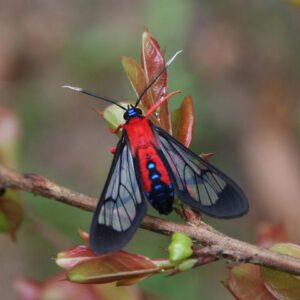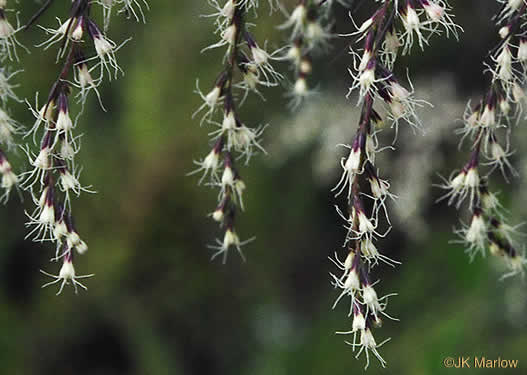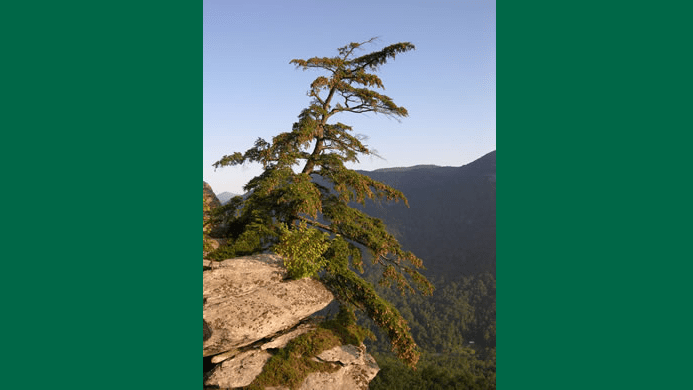Every once in a while, we all like to root for the underdog and the June 2024 Plant of the Month underdog is dogfennel, Eupatorium capillifolium. This plant often gets a bad rap because it can be an aggressive spreader and has a particular affinity for disturbed soils. Some may even refer to this plant as invasive, but as a native plant it does not meet the definition for invasive status. An invasive species is defined as any non-native organism that causes significant economic, ecological, and/or human harm. Although an underappreciated native plant, dogfennel actually provides ecosystem benefits.

Scarlet-bodied wasp moth (Cosmosoma myrodora). Credit: J.J. Flossem (butterfliesandmoths.org)
You might be surprised to learn that dogfennel is in the Asteraceae, commonly known as the aster family. The Name Eupatorium comes from Mithridates VI Eupator Dionysus, a Persian King (120-63 BC), and the specific epithet capillifolium comes from the Latin capill meaning “hair” and folium meaning “leaf,” which is in reference to the long, hair-like leaf segments. The flowers, although quite small, are made of up disc flowers and are borne on large corymbs. The flowers are visited by numerous insects including small bees, butterflies, and moths. The moth pictured with this article is a scarlet-bodied wasp moth (not a wasp), Cosmosoma myrodora, which actually feeds on the plant. Dogfennel contains alkaloid compounds that can damage the human liver, but this moth absorbs the chemical and uses it as a defense against predators. Furthermore, the chemicals found in dogfennel have insecticide and fungicide properties. The leaves can be crushed and the extract used as a mosquito repellent.
In the native plant movement, we encourage “right plant, right place”. While dogfennel may not be well suited for the typical home garden due to its aggressive nature, you may want to consider leaving it be to do its thing in wild areas such as old fields, forest openings, or roadsides.



